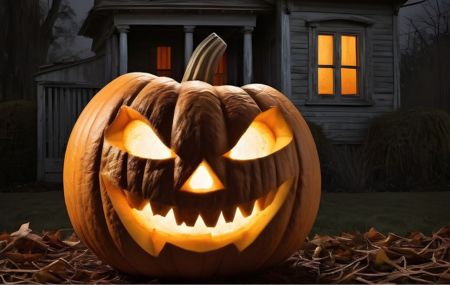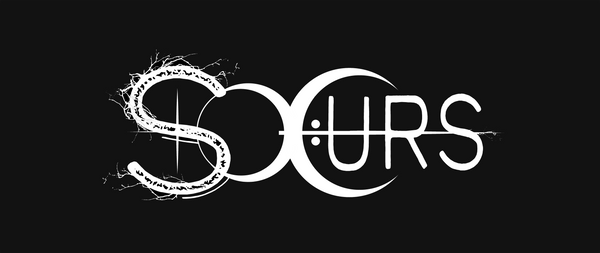
The origins of the pumpkin and its symbolism at Halloween
The pumpkin has become an essential symbol of Halloween, but what are its true origins and why is it associated with this holiday? This orange vegetable, often carved to resemble a menacing or funny face, hides a history rich in pagan symbolism and ancient traditions. For centuries, it has held a special place in folklore, witchcraft and even protection rituals. Halloween has given it a new dimension, where it reigns at the center of the celebrations, but its roots are much deeper.
Sommaire
- Why is pumpkin associated with Halloween?
- The Pagan Meaning of Pumpkin
- The History of "Jack O'Lanterns" and Their Evolution
- Pumpkin in modern beliefs and contemporary rituals
- Culinary and medicinal uses of pumpkin in folklore
- 🎃
Here are the most frequently asked questions we get about this:
- Why is pumpkin associated with Halloween?
- What is the significance of pumpkin in pagan beliefs?
- How did the tradition of pumpkin carving begin?
In this article, we'll explore these questions, while also diving into the pumpkin's pagan origins and discovering why this symbol has become so important to Halloween.
Why is pumpkin associated with Halloween?
The association between pumpkins and Halloween is relatively recent in the history of the holiday. Halloween has its origins in the Celtic festival of Samhain , a celebration marking the end of summer and the beginning of winter . For the ancient Celts, this period was seen as a time of transition, when the veil between the world of the living and the world of the dead was thinner. Samhain was a time when ancestors returned to the living, and wandering spirits were able to manifest themselves more freely.
Lanterns played a crucial role in the rituals of the Samhain Sabbat. The Celts hollowed out turnips to make lanterns, believing that they would ward off evil spirits and guide the souls of the deceased to the afterlife. These lanterns were also placed near doorways to protect homes. When the tradition arrived in North America with Irish immigrants in the 19th century, the turnip was replaced by the pumpkin, a more abundant local vegetable that was easier to carve. The pumpkin became a more practical and visually striking choice due to its size and bright color.
From this point on, the carved pumpkin, or Jack O'Lantern , quickly gained popularity and established itself as the central symbol of Halloween festivities. This also allowed Halloween to develop as a more fun and community-oriented holiday, while retaining some mystical aspects related to ancient traditions.
The Pagan Meaning of Pumpkin
In Pagan beliefs and Wiccan tradition, the pumpkin is much more than just a decorative element. It is associated with protection , abundance , and the mysteries of the afterlife. Ancient cultures considered root vegetables and squashes to have magical properties. The pumpkin itself, with its impressive size and protective appearance, was seen as a symbol of comfort and connection to Mother Earth.
Its round shape, similar to the belly of a pregnant woman, symbolizes fertility and the ability to give life. It represents the nourishing and protective nature . In addition, the interior of the pumpkin, filled with seeds, evokes notions of regeneration and renewal. These characteristics make it a tool used in many rituals of protection and luck during the dark season of the year, which begins precisely at Samhain.
Modern witches, or Wiccan practitioners, may use pumpkins in rituals to bring blessings of prosperity or to ward off negative influences . For example, filling a pumpkin with autumn leaves, small stones, or coins is a common practice to attract abundance.
Pumpkin and Spiritual Protection
A pumpkin placed at the entrance of a home can serve as a spiritual guardian. Wiccans and other Pagan practitioners may also carve protective runes or specific symbols into the surface of the pumpkin to enhance its ability to repel harmful energies. Pumpkin seeds, often left as offerings or used in spells, are also considered to bring good luck and hope .
The History of "Jack O'Lanterns" and Their Evolution
The term "Jack O'Lantern" originated from an Irish folk tale featuring a character named Stingy Jack. According to legend, Jack was a cunning man who repeatedly tricked the devil into claiming his soul. However, when Jack died, he was cast out of both heaven and hell, condemned to wander forever in darkness with only a glowing lump of coal to light his way. He placed the coal in a hollowed-out turnip to form a lantern.
Jack O'Lanterns became an essential part of the Halloween celebration, first in Ireland and Scotland with turnips, and later in America with pumpkins. The light inside the lanterns symbolized both protection from evil spirits and lighting the path of the deceased. By carving these grotesque faces, people sought to ward off evil spirits and keep negative forces at bay.
The evolution towards a festive tradition
Today, pumpkin carving is a popular and fun ritual, but it still carries a connection to the darker, more mystical traditions of Halloween. Children and families enjoy creating funny or scary faces on pumpkins, continuing a tradition that has lasted for centuries. It is also a common activity in modern Halloween celebrations, whether they are festivals, competitions, or simple home decorations.
Pumpkin in modern beliefs and contemporary rituals
In modern witchcraft and Wiccan beliefs, the pumpkin continues to play a role in fall rituals and Samhain Sabbat celebrations. It can be used to attract prosperity or good luck, and its seeds are often dried and used in charms or spells. Additionally, pumpkins can be decorated to mark a specific intention during a ritual. A protective face carved into a pumpkin can be placed near the entrance of a home to ward off evil influences .
The pumpkin also features on altars during the Samhain Sabbat festivities, marking both the abundance of the harvest and the beginning of the winter season . It is often associated with offerings to the deceased, as well as transitional rituals, as the Samhain Sabbat symbolizes death and rebirth in the cycles of nature.
Culinary and medicinal uses of pumpkin in folklore
It is important to mention that pumpkin is not only a spiritual symbol . It has long been used for its culinary and medicinal benefits. In traditional medicine, pumpkin is considered to have nourishing and detoxifying properties. Pumpkin seeds, rich in zinc and magnesium, are consumed to strengthen the immune system and for their protective effects on health, especially before the arrival of winter. These seeds were often incorporated into herbal teas or consumed directly for their benefits .
In Samhain feasts, pumpkin was incorporated into meals to symbolize the abundance of the harvest and as a final tribute to the earth before winter set in. Pumpkin dishes, such as soups and pies, are still popular today during fall celebrations .
Ultimately, the pumpkin is more than just a Halloween decoration. It has roots in ancient beliefs and pagan practices that celebrate the transition between life and death, protection from spirits, and the bounty of the earth. As a symbol of renewal and fertility, it continues to occupy a central place in modern Halloween celebrations and the rituals of those who honor the natural cycles. Today, whether as a simple decorative element or a ritual tool, the pumpkin remains a powerful icon of this mystical season.
